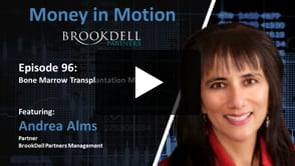Managed Futures Dashboard:
Top Managed Futures News, Listings, Member Posts, Managed Futures Daily Indices and more!
The existence of a quality premium in stocks that has been persistent over time, pervasive around the globe, and robust to various definitions have been well documented by studies such as “Buffett’s Alpha,” “Global Return Premiums on Earnings Quality, Value, and Size,” and “The Excess Returns of ‘Quality’ Stocks: A Behavioral Anomaly.” While there is no consistent definition of the quality factor (as there is with other factors), quality stocks typically have the following characteristics: low earnings volatility, high margins (profitability), high asset turnover (efficient use of capital), low financial leverage (little debt), low operating leverage (low fixed costs), and low specific stock risk. These are the traits AQR Capital Management used to define their version of the quality factor: QMJ, or quality minus junk. Companies with these attributes historically have provided higher returns, especially in down markets.
Chi Cheong Allen Nga and Jianfu Shen contribute to the literature, providing out-of-sample results, with their study “Quality Investing in Asian Stock Markets,” published in the September 2020 issue of Accounting & Finance. They examined two quality investing strategies using gross profitability (GP, revenues minus costs of goods sold, scaled by total assets) or FSCORE (a measure of financial strength), respectively, over the period 2000–2016 in Hong Kong, Japan, Korea, Singapore, and Taiwan stock markets. 1 They noted that previous studies documented that the FSCORE can successfully screen winners from losers in value stocks and that the ratio of GP has strong predictive power on stock returns. Following is a summary of their findings:
• Both FSCORE and GP are significantly positively associated with subsequent stock returns in cross-sectional regressions.
• The FSCORE anomaly returns ranged from 0.16 percent per month in Japan to 0.38 percent per month in Taiwan. The ranged for GP anomaly returns was from 0.15 percent (Korea) to 0.86 percent (Singapore).
• The returns on quality are not driven by small firms.
• Actively managed financial institutions buy significantly more high-quality stocks than low-quality stocks in each of five Asian markets. The trading pattern is not significant in passively managed institutions.
• Quality investing, instead of simple value investing based on only the book to market ratio, is more popular in the institutional investment decisions——institutional investors tend to follow the academic literature on anomalies.
Nga and Shen did note that:
“gross profitability cannot screen winners from losers in Japan and Korea, in which the portfolio of high GP stocks gives similar return as low GP stocks.”
They added that this finding was consistent with evidence from other studies which show substantial variation of the GP effect in international markets. In other words, there are exceptions to the general tendencies.
Their findings led Nga and Shen to conclude:
“The results in our paper support the argument that institutional investors such as hedge fund and mutual fund are sophisticated, and they trade on some stock return anomalies.” Their findings provide out-of-sample supporting evidence for the pervasiveness of the quality factor.
There’s one more point we need to discuss—how investors in value funds can gain exposure to the quality factor.
Indirectly Gaining Exposure to Quality in Value Strategies
While some value strategies use the single metric of P/B (price-to-book) to determine value, others include other metrics such as P/E (price-to-earnings) and P/CF (price-to-cash flow). The metrics which include earnings-related measures provide exposure to the profitability factor (and the related quality factor). For example, since 2013, in their portfolio construction design, Dimensional’s value funds use not only P/B but also a measure of profitability. Alpha Architect’s value strategies utilize EBIT/Enterprise Value and utilize several quality screens (to include the FSCORE concept mentioned above; read the details here.) AQR Capital Management’s offerings, in addition to using P/B, also use P/E, P/CF, price-to-forecasted earnings, and sales-to-enterprise value. Bridgeway’s value funds also use multiple metrics including P/E and P/CF. In other words, you can gain exposure to profitability and quality indirectly through investments in value funds that use metrics other than P/B.
As one example, using the regression tool at www.portfoliovisualizer.com, and AQR’s four-factor model (beta, size, value, and momentum) plus quality (QMJ), from September 2011 through July 2020 Bridgeway’s Omni Small -Cap Value Fund (BOSVX) had a 0.48 loading on the QMJ factor. Similarly, over the period from 2013 through July 2020, Dimensional U.S. Small Value Fund (DFSVX) had a loading on QMJ of 0.5.
We have one last important point to cover. Multifactor funds are more efficient than single factor funds. One reason is that if you use the component approach, such as buying a value fund and a quality fund, you could have one factor-based fund buying a stock, while another factor-based fund will be selling the same stock. For example, if a stock is falling in price, it might drop to a level that would cause a value fund to buy it, while a momentum fund would be selling the same security. Investors would thus be paying two management fees and also incurring trading costs twice, without having any impact on the portfolio’s overall holdings.
Summarizing, the evidence suggests that the quality (high FSCORE or GP) is an important characteristic for investors to consider, along with cheapness (value). Thus, investors should consider including exposure to quality in their portfolio design.
Notes:
- Note that Alpha Architect has developed an enhanced version of this metric, described here. ↩
The Quality Factor—What Exactly Is It? was originally published at Alpha Architect. Please read the Alpha Architect disclosures at your convenience.
Today's Managed Futures Headlines:
Access Over 250K+ Industry Headlines, Posts and Updates
Join AlphaMaven
The Premier Alternative Investment
Research and Due Diligence Platform for Investors
Free Membership for Qualified Investors and Industry Participants
- Easily Customize Content to Match Your Investment Preferences
- Breaking News 24/7/365
- Daily Newsletter & Indices
- Alternative Investment Listings & LeaderBoards
- Industry Research, Due Diligence, Videos, Webinars, Events, Press Releases, Market Commentary, Newsletters, Fact Sheets, Presentations, Investment Mandates, Video PitchBooks & More!
- Company Directory
- Contact Directory
- Member Posts & Publications
- Alpha University Video Series to Expand Investor Knowledge
- AUM Accelerator Program (designed for investment managers)
- Over 450K+ Industry Headlines, Posts and Updates








